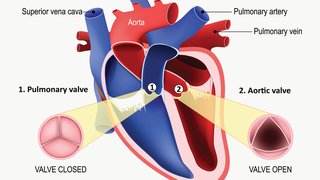
Approximately 3 to 5 million people in the United States are living with chronic hepatitis C, an infection that causes inflammation and scarring in the liver. Heavy alcohol use, fatty liver, autoimmune diseases, among other, can lead to cirrhosis of the liver, but the hepatitis C virus is the most common cause. If left untreated, chronic hepatitis C can cause scarring of the liver that results in cirrhosis which in turn results in long-term health problems, including liver failure, liver cancer and death. This danger is compounded by the fact that many infected people aren’t aware they have the disease because they don’t feel sick or experience symptoms. Unlike hepatitis A and hepatitis B, for which vaccines exist, there is no vaccine for hepatitis C.
But there is some good news: Hepatitis C can now be cured. There are several effective medications for it, and if it’s caught early and treated, people with the disease can live a normal life. The key is finding it early.
Unfortunately, there is a stigma associated with hepatitis C, and our patients often struggle with telling their loved ones they have it. These patients assume that if they have hepatitis C, they did something bad, as the most common cause is injection drug use. The truth is, if a person tests positive for hepatitis C, it doesn’t mean he or she is a drug addict; there are several ways people can get the disease. Some people are born with it; others become infected through a blood transfusion or a needlestick with infected blood.
How Is Hepatitis C Spread?
Hepatitis C is spread when blood from a person infected with hepatitis C — even in tiny amounts — enters the body of someone who’s not infected. This can occur due to:
- Sharing equipment (needles, syringes) contaminated by blood from an infected person
- Receiving a blood transfusion or organ transplant prior to 1992 (after which widespread screening for hepatitis C virtually eliminated it from the blood supply)
- Needlesticks with infected blood (prevalent among health care workers)
- Poor infection control in health care facilities
A pregnant woman with hepatitis C can pass the virus to her baby, however, the risk is fairly small (less than 5 percent of infected mothers transmit the virus to the fetus). Hepatitis C is not transmitted by casual contact such as hugging or kissing or through food, water, or sharing utensils. Nor do sneezing and coughing spread hepatitis C. If you have hepatitis C, you can safely hug and share a smoothie with your children or grandchildren.
Hepatitis C Symptoms
Approximately 70 to 80 percent of people with acute hepatitis C don’t experience symptoms. It usually takes six to seven weeks after exposure for symptoms of acute hepatitis C to show up, but they can appear anytime between two weeks to six months after initial contact. With a chronic infection, symptoms can take decades to appear, leaving roughly half of those infected unaware they have hepatitis C. Unfortunately, they can still spread the virus despite their lack of awareness. When symptoms finally appear, they often include:
- Fever
- Fatigue
- Loss of appetite
- Nausea
- Vomiting
- Abdominal pain
- Dark urine
- Gray-colored stools
- Joint pain
- Jaundice
Health Consequences
We see some people infected with the hepatitis C virus fight it without treatment, but 75 to 85 percent of infected people develop chronic hepatitis C. Without treatment, the virus stays active in the body and slowly damages the liver over time, causing scarring. Approximately 5 to 20 percent of people with untreated hepatitis C develop cirrhosis (scar tissue that builds up and takes over most of the liver). It takes about 20 years of hepatitis C infection for cirrhosis to develop. Roughly 10 to 20 percent of patients with cirrhosis develop liver failure, potentially requiring a liver transplant. Hepatitis C is the leading cause of cirrhosis and liver cancer and the most common reason for liver transplantation in the United States.
The Importance of Testing for Hepatitis C
Testing is critical for determining a hepatitis C diagnosis, and the earlier we can diagnose someone, the sooner they can begin potentially life-saving treatment. The following individuals are at greatest risk for hepatitis C and should be tested for it:
Leading Hepatitis C Risk Factors
- People born between 1945 and 1965
- People who are current or former injection drug users, even if you injected only once or many years ago
- Recipients of blood transfusions or donated organs prior to July 1992
- People who received clotting factor concentrates produced before 1987
- Long-term hemodialysis patients
- People with known exposure to hepatitis C
- Health care workers who've been subject to needlesticks
- Recipients of blood or organs from a donor who later tested positive for hepatitis C
- Children born to women with hepatitis C
- People infected with HIV
- People who have abnormal liver tests or liver disease
We now have two main blood tests to diagnose hepatitis C:
- Hepatitis C antibody test. This screening test determines whether you’ve ever been exposed to hepatitis C by checking for the presence of antibodies, substances your body makes to fight infections. If this test is negative, you haven’t been exposed and further testing is not usually required. If the test is positive, you likely have had hepatitis C at some point in your life. There are probably some false positive tests, so some people who have positive antibodies may never have been infected. This is exceedingly rare. This test doesn’t tell you whether you currently have hepatitis C. You’ll need to have the second test done.
- HEP C RNA test. This test determines whether you are currently infected with hepatitis C by checking for the genetic material (RNA) of the hepatitis C virus in your blood. If this result is positive, you currently have hepatitis C; if it’s negative, it means that even though you were exposed to the virus at some point, your body has cleared the infection on its own.
Treatment for Hepatitis
After you receive a positive hepatitis C test result from your primary care physician, it’s time to see a liver specialist. Your liver specialist will do several things, including:
- Confirm that you have hepatitis C using the HEP C RNA test
- Evaluate the amount of scar tissue on your liver to determine what stage of scarring you’re in (1–4). The specialist will take a biopsy and/or use MRI or ultrasound elastography to evaluate the amount of scar tissue on your liver. If you have more advanced scar tissue (stage 3 or 4), you may have a longer course of treatment.
- Determine the hepatitis C genotype using a blood test. Knowing the genotype helps your physician choose the best medication for you.
- Ask you about complications of liver cirrhosis
Unlike in the past, hepatitis C can now be cured, not just managed. Using the above information, your liver specialist will select the best treatment for you. There are several medications that have a 90 to 95 percent cure rate within three to six months. These new medications cause fewer side effects than previous medications and are well tolerated by most patients. Even if you’re cured of hepatitis C, you’ll still need to keep seeing your liver specialist for ongoing monitoring if you have cirrhosis.
What Should You Do to Protect Your Liver if You Have Hepatitis C?
Following a healthy lifestyle reduces the risk of hepatitis C progressing to cirrhosis and liver failure. These healthy habits may help you slow the disease’s advancement:
Don’t drink alcohol. The most important thing you can do if you have hepatitis C is to not drink alcohol. Alcohol can cause further liver damage.
Achieve or maintain a Body Mass Index (BMI) less than 30. As your BMI increases, your risk of fatty liver increases. If you have hepatitis C and fatty liver, you increase your risk for cirrhosis, liver failure and the need for a liver transplant.
Quit smoking. Smoking increases your risk of developing cirrhosis and liver failure.
Participate in moderate-intensity physical activity. In one study, 60 minutes of daily walking improved liver function in people with liver disease.
Lowering the “C” Levels
UT Southwestern researchers have been involved in clinical trials on hepatitis C since the virus was discovered in 1989. Consequently, our liver specialists remain on the leading edge of effective treatment for the disease.
If you’re at risk for hepatitis C, get tested as soon as possible. We can’t stress enough the importance of early detection. If you test positive, consult a liver specialist for further evaluation and treatment.
With improvements in treatment, the public health emphasis on cleaning up the blood supply and universal precautions for handling blood, it’s possible that within the next 20 years, hepatitis C will become rare and complications from it even rarer.











